On February 25, 2024, Belarus held its first “single voting day” (SVD). The social network Instagram remains one of the most popular sources of news and other information in Belarus, especially among the female part of the Belarusian internet audience, for whom this platform is the primary source. Regular monitoring reveals that Belarusian state-owned media use Instagram predominantly to inform their followers about regional events and local news.
Therefore, it was important to assess how much the propaganda resource would be utilized in the final stage of the elections*.
For dataset preparation, Meta’s analytical tool Crowdtangle was traditionally used. Due to the specifics of processing data from Instagram, a total of 1,612 Cyrillic posts published in February 2024 were collected. After cleaning the dataset from irrelevant Russian, Kazakh, Kyrgyz, and other posts, a pool of 736 Belarusian entries across 114 accounts was identified.
The distribution of publications and engagement throughout the month:

Accounts with the most election-related publications:
- NEWS FROM STOLIN 82
- News from Ostrovets 42
- Our Korelichi 35
- Lepel, district newspaper “Lepelski kray” 30
- Native Field | Klimovichi 29
- Haradok Herald 27
- News in Postavy. PC 24
- News of Vitebsk and the region 24
- Zhabinka Current 23
- Dokshitsy ONLINE DOKSHITSYBY 22
Belarusian state regional media took the coverage of the elections* on Instagram seriously.
The ten posts that gathered the most interactions (likes, comments):
| 1 | NEWS FROM STOLIN | 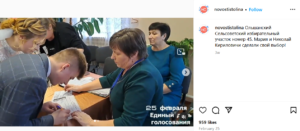 |
|
| 2 | Mirror | News |  |
|
| 3 | NEWS | EVENTS | REVIEWS | GOMEL | 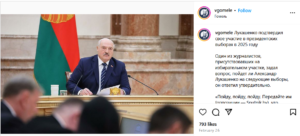 |
|
| 4 | News from Orsha – “Arshanskaya gazeta” | 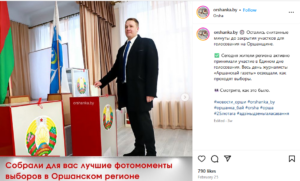 |
|
| 5 | Sviatlana Tsikhanouskaya | 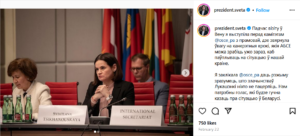 |
6 | Veronika Tsepkalo |  |
| 7 | NEWS BREST | BELARUS 🏹 | 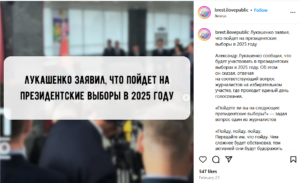 |
|
| 8 | Football Club BATE Borisov 🟡🔵 |  |
|
| 9 | Radio Svaboda | Belarus |  |
|
| 10 | Strong News | 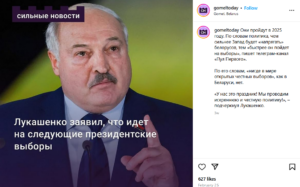 |
Here we see the presence of accounts of political actors, independent Belarusian media, and the disheartening visualization of political intentions. A usual recommendation: using visualizations of individual political figures does not affect algorithm performance nor improve engagement, but it does fulfill a communication task by promoting a foreign agenda.
Presenting all post texts as a “word cloud”:

It can be concluded that most posts were focused on attracting voters, promoting early voting, and increasing turnout for the elections*.
Examining the used visualization, we selected some of the most characteristic posts for this electoral campaign.
For example, templates for posts about the elections* were used:
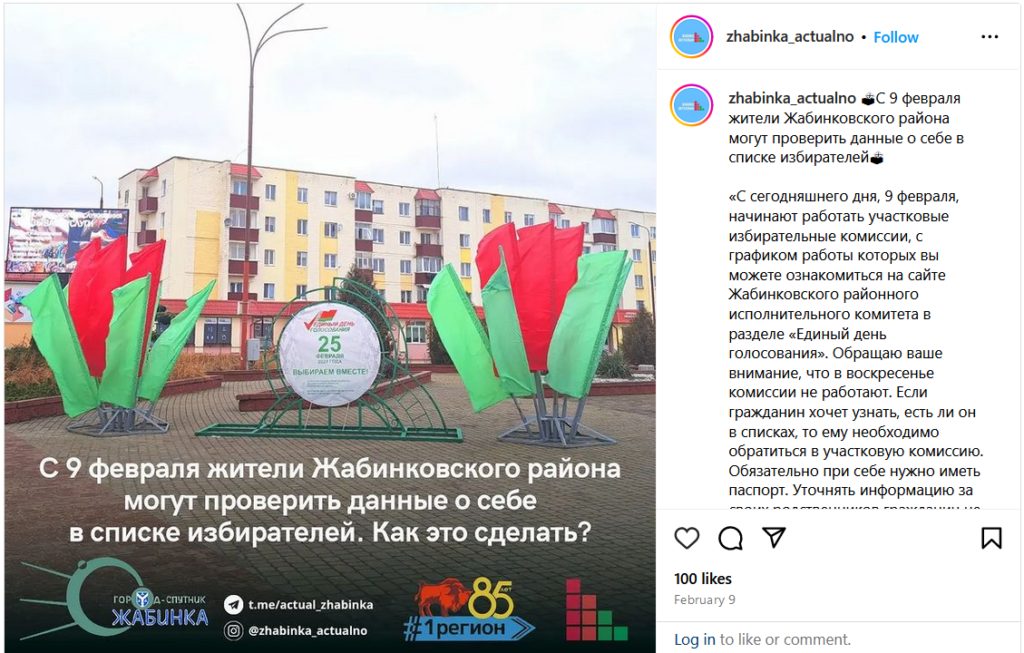
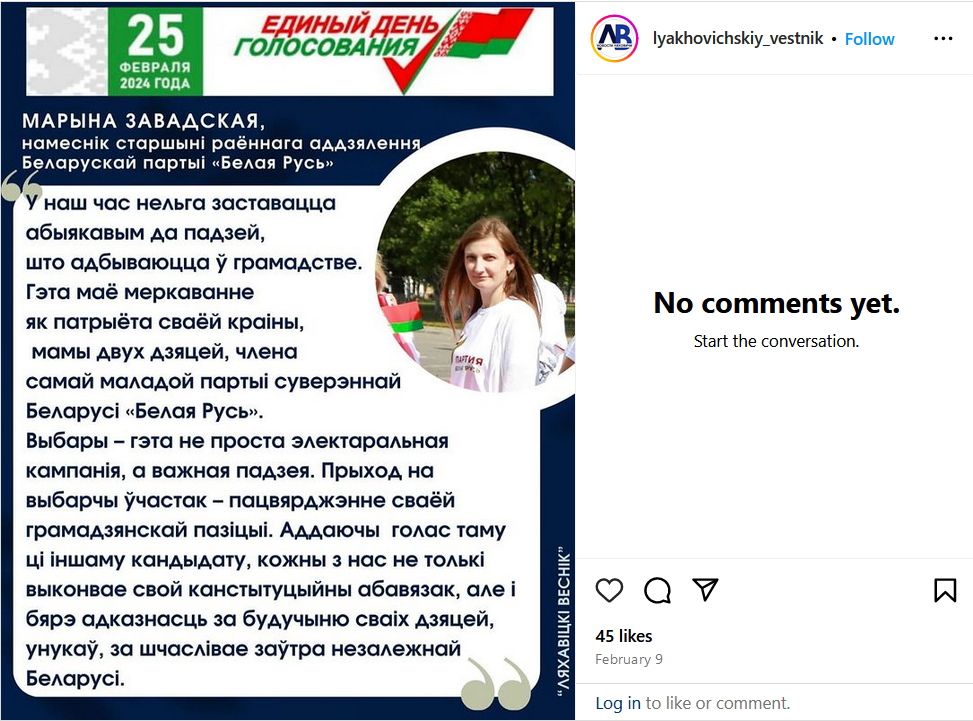
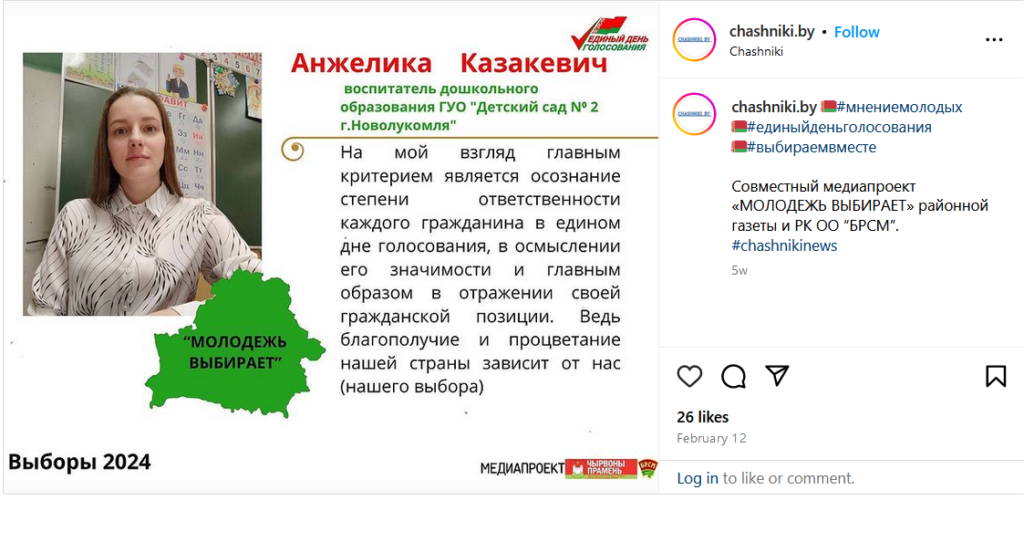
“The joy” of voters in different places in Belarus:
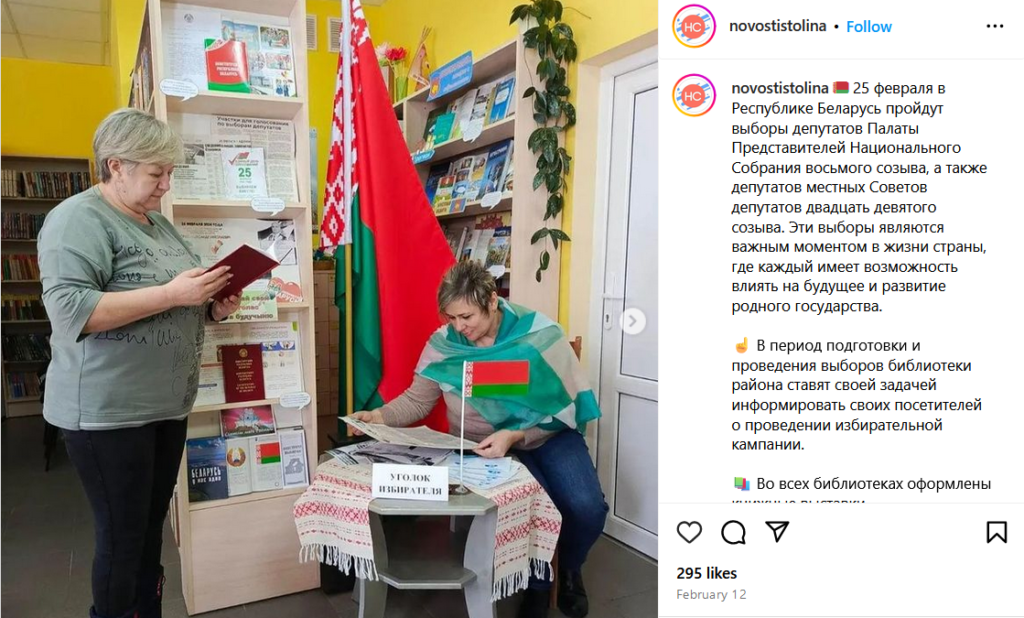
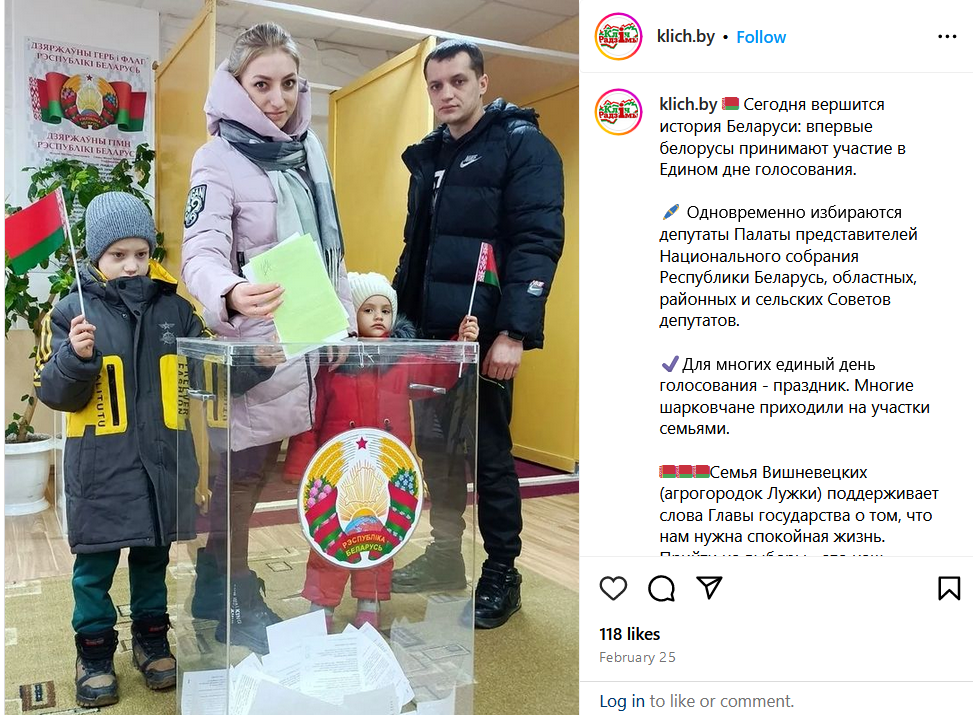

The attractiveness of treats at polling stations:
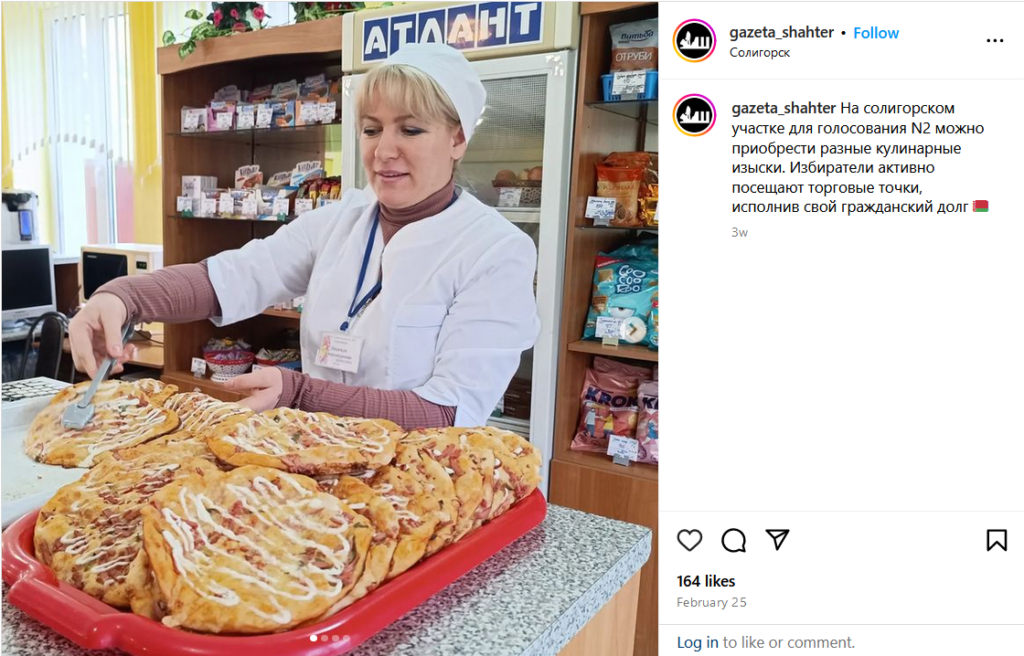
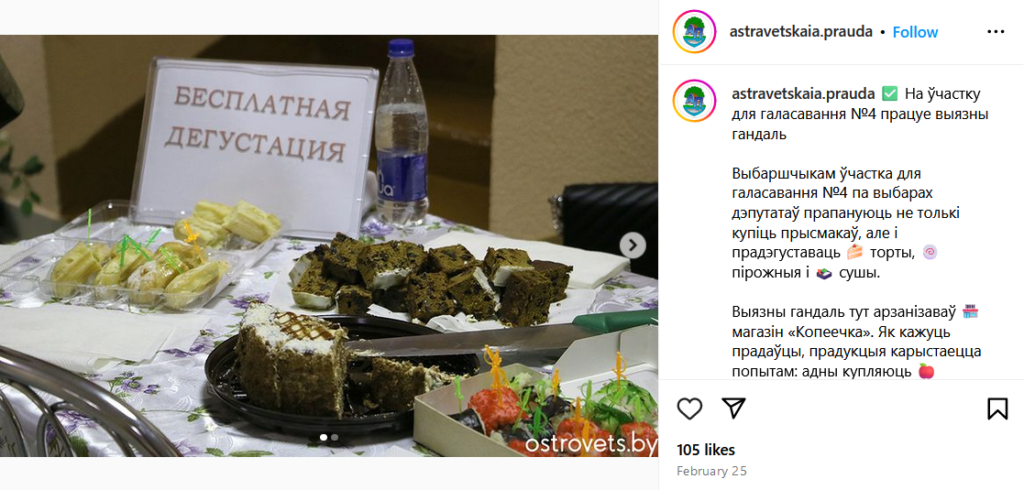
“Decorated” cities and villages:
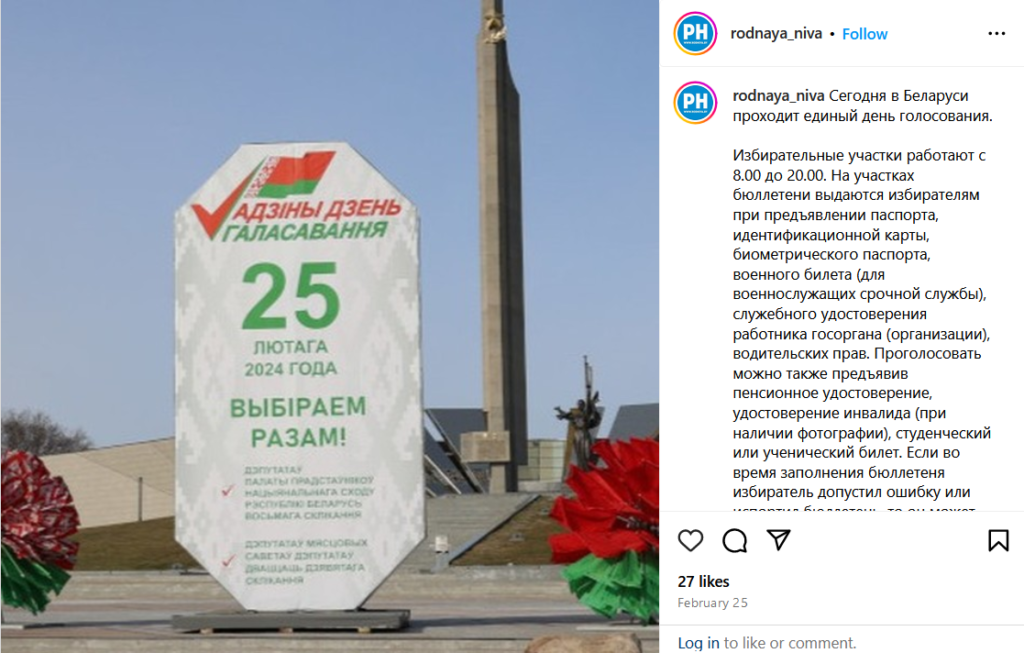
Stars were not left out either:

There was also an entertainment program:
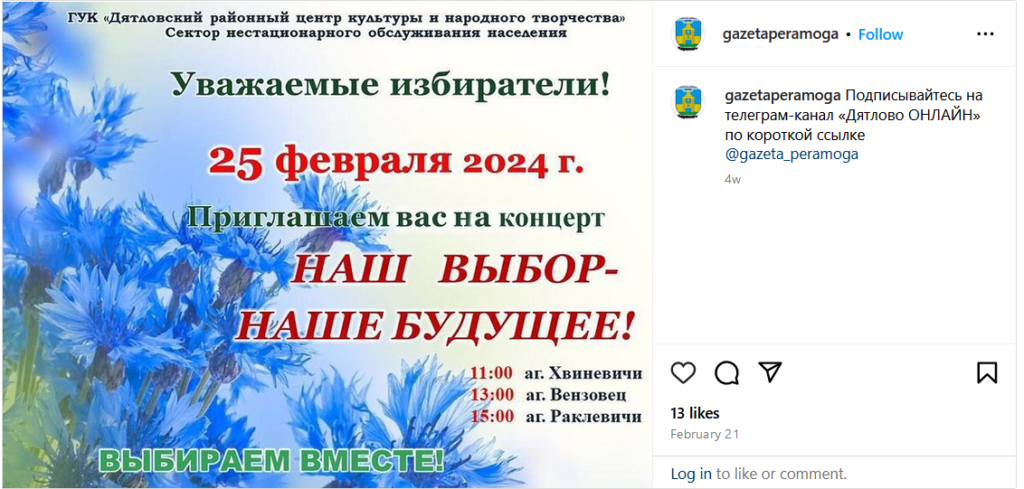

It can be concluded that Belarusian state media in their Instagram accounts were engaged in promoting the elections*, i.e., they played the role of state propaganda.
There was practically a single case of misinformation in an account affiliated with the “Polyamy” newspaper from the town of Korelichi, accompanied by a caricature:

Several indicators can highlight the presence of disinformation elements or bias in the material:
- One-sided viewpoint: The material exclusively presents a positive evaluation of the acting head of state and his decision to run for elections, without offering critical opinions or alternative views.
- Use of emotional language: Phrases such as “Belarusians took with relief” and “there will be someone to stand up for us” are designed to evoke an emotional response from the reader and create a subjective representation of the situation.
- Hints at external threats without concrete evidence: Claims that “it’s no secret there are ‘plans’ for Belarus by European officials” raise the theme of external danger, but are not supported by concrete facts or evidence.
- Manipulation of facts or their absence: The absence of references to research, public opinion polls, or other objective data to substantiate the claims about the population’s sentiments.
- Personality cult: Focusing attention on the personality of Alexander Lukashenko and presenting him as the only leader capable of maintaining stability and peace in the country, may indicate an attempt to create or enhance a personality cult.
- Lack of diversity in expert opinions: Quoting a single political commentator who supports the current government, without presenting the views of experts with different perspectives.
The election campaign in Kaardynatsiy Rada is also accompanied by low quality of visualization, which is reflected in the low level of involvement:
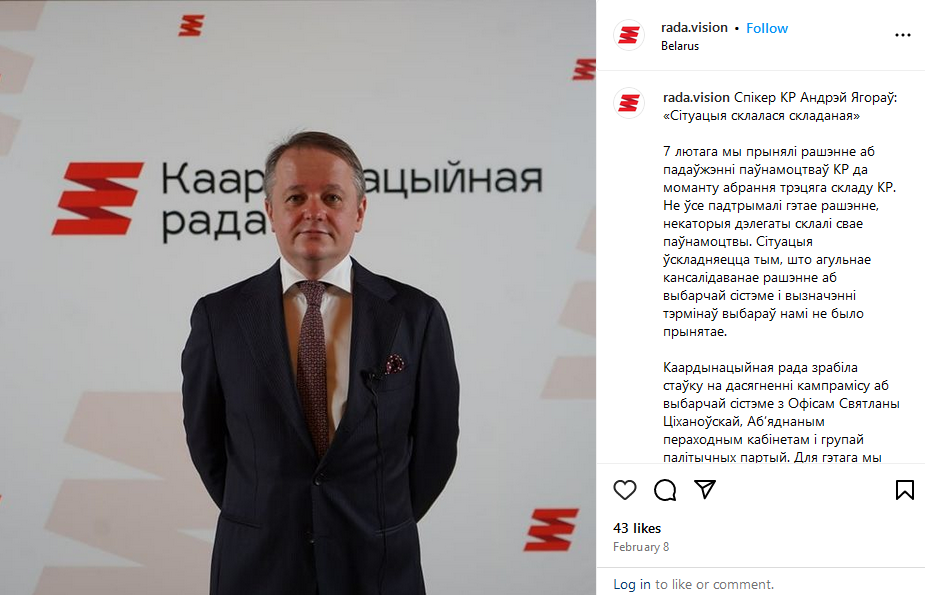
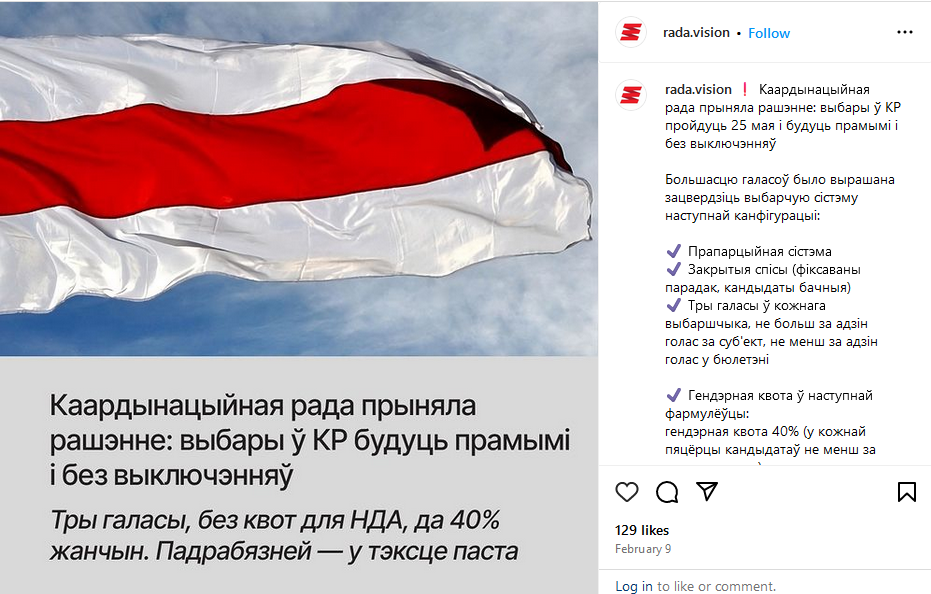
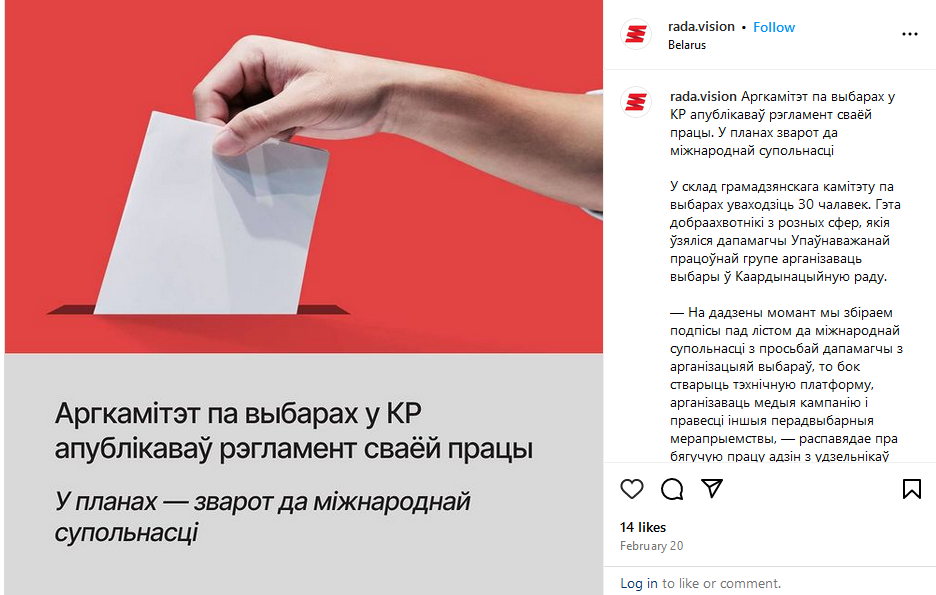
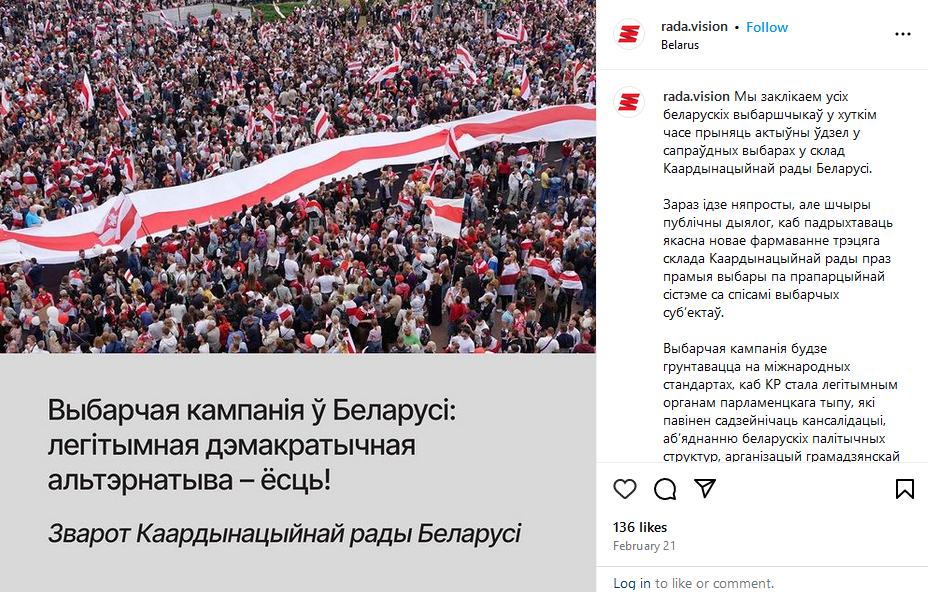
In conlusions:
The analysis of the election campaign shows that, similar to previous monitoring results of Instagram accounts of Belarusian state media, these platforms are not used to spread disinformation narratives about elections in neighboring countries or internationally. Instead, they serve exclusively as a tool for propaganda, aimed at strengthening the current political regime. The materials used in such communication and the visual range resemble cosplay of Soviet propaganda, fully copying its style and methods of information delivery. The main difference is the transition from Soviet district newspapers to the modern communication platform – the social network Instagram. Such an approach to the communication campaign demonstrates a clear gap between the formality of the conducted events and the real public opinion, the sentiments of the country’s citizens. It can be concluded that the strategy of propaganda implemented through Instagram not only preserves outdated methods of influence but also ignores the needs and expectations of voters.


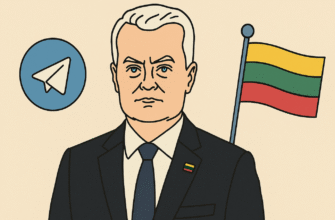



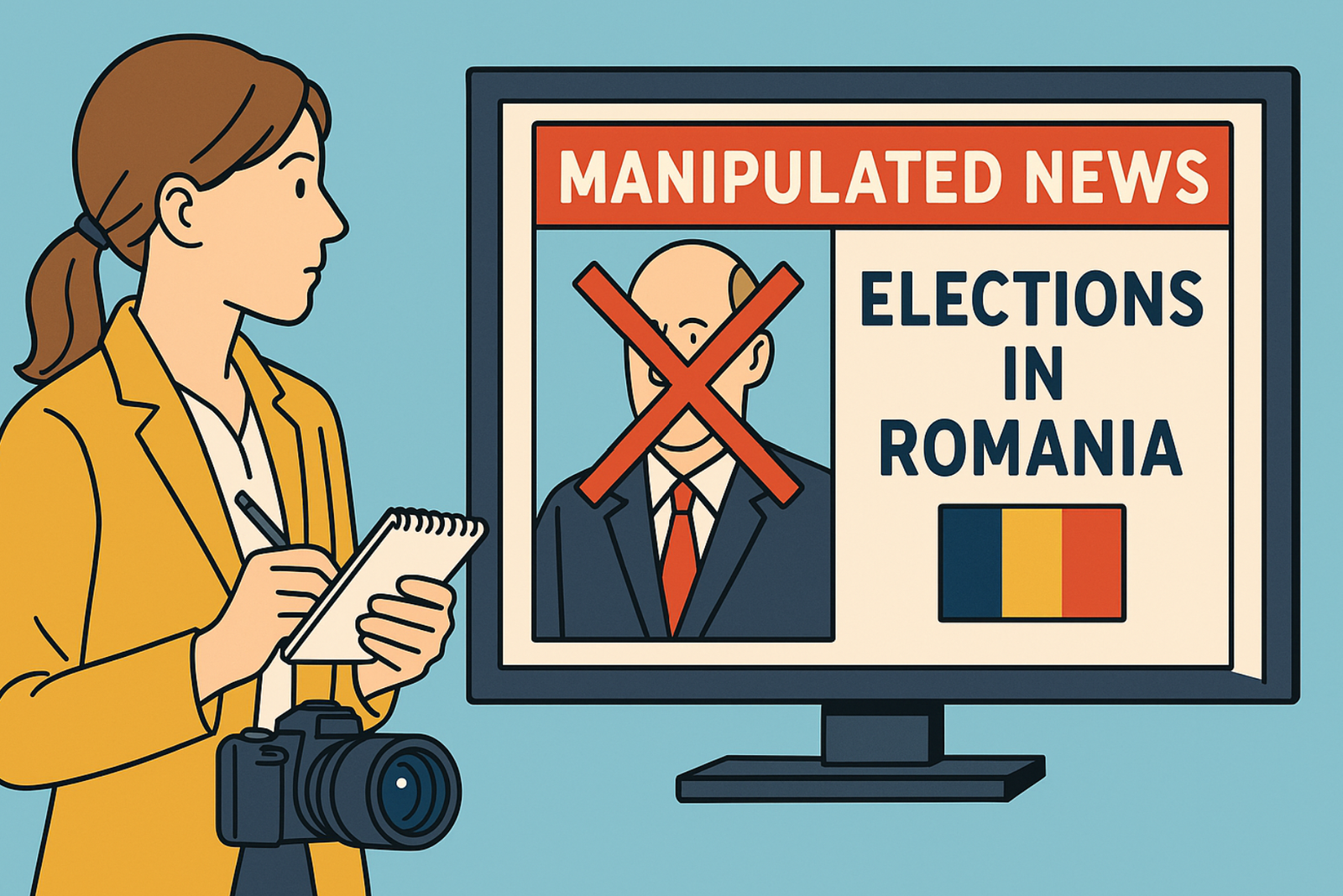



Comments are closed.